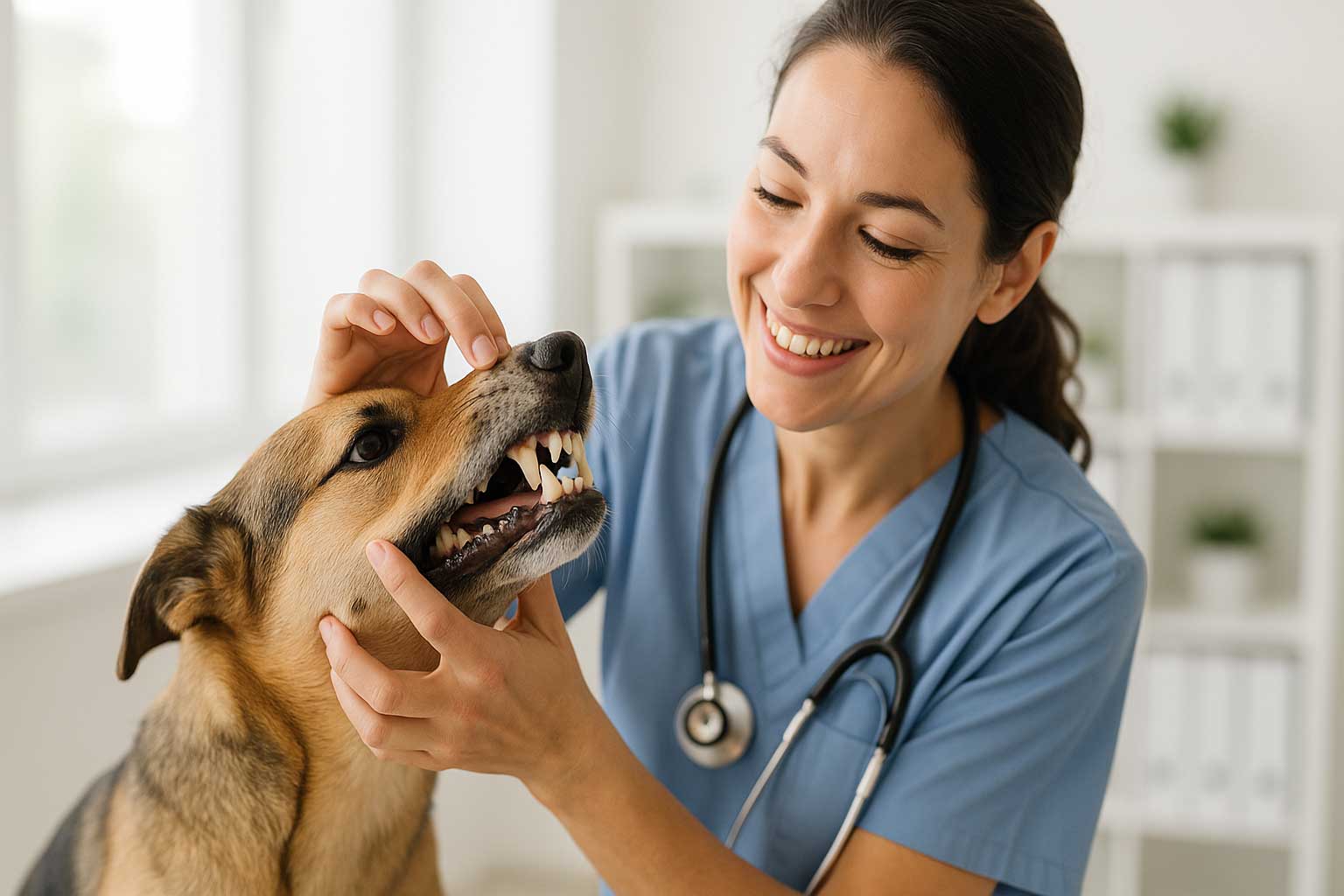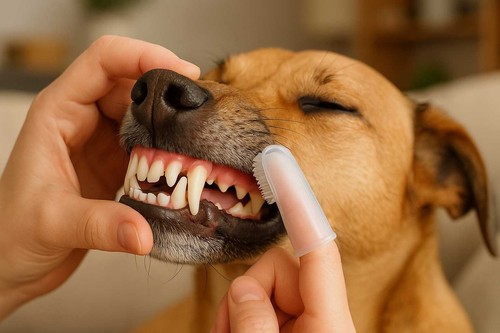
Pet Dental Health: Why Oral Care Matters More Than You Think
Introduction
If you’ve ever shrugged off your pet’s bad breath, you’re not alone—but you might be overlooking the most common clinical condition in adult dogs and cats: periodontal disease. Left unchecked, oral inflammation and bacteria don’t just cause pain and tooth loss; they can affect the heart, kidneys, and overall wellbeing. The fix is practical: steady at-home care plus periodic professional cleanings. In this guide, you’ll learn what to watch for, how to build an oral care routine that actually sticks, and which products are worth your money.
Quick win: Aim for daily brushing. If that’s tough, combine brushing several times per week with a VOHC-accepted chew or gel.
Why oral health is whole-body health
- Bacteria and inflammation travel. Gum disease creates a reservoir of bacteria that can enter the bloodstream, potentially impacting the heart and kidneys. :contentReference[oaicite:0]{index=0}
- Pain changes behavior. Pets hide discomfort. Chewing on one side, dropping kibble, or avoiding toys often signals oral pain.
- Early intervention is cheaper and kinder. Treating gingivitis is far easier than managing advanced periodontitis that requires extractions and x-rays (the gold standard approach per veterinary guidelines).

Signs you shouldn’t ignore
- Persistent bad breath
- Red, puffy, or bleeding gums
- Brown/tan tartar along the gumline
- Pawing at the mouth, drooling, dropping food
- Behavior changes: irritability, hiding, reluctance to chew
If you see gum bleeding, loose teeth, facial swelling, or pain while eating—book a vet visit promptly.
The essentials of a home oral-care routine
1) Brushing: the gold standard
- Use a pet-safe toothpaste (never human toothpaste) and a soft pet brush or finger brush.
- Angle bristles at 45° to the gumline and make small circles; focus on outer surfaces.
- Build the habit gradually over 2–3 weeks: touch lips → rub gums with gauze → add paste → introduce brush.
Daily is ideal; even 3–4 times/week significantly reduces plaque.
Helpful reads on your journey:
- Reading labels as a pet parent? See our guide on How to Read a Pet Food Label Like a Pro.
- Hydration also supports oral and overall health—learn more in Why Hydration Is Essential for Your Pet’s Health.
2) VOHC-accepted products: smart add-ons
Look for the Veterinary Oral Health Council (VOHC) seal. Products that earn it have been shown to reduce plaque and/or tartar. Categories include dental diets, chews, gels, water additives, and toothpastes.
- Examples you’ll see on recent lists: Virbac C.E.T. VeggieDent, Greenies, WHIMZEES, select Royal Canin Dental diets (availability varies).
[Image Suggestion: Realistic photo of a small dog calmly chewing a VOHC-accepted dental chew on a pet bed. ALT: small dog using dental chew approved to reduce tartar]
3) Diet & lifestyle
- Offer appropriate chew toys (avoid very hard objects that can fracture teeth).
- For cats, consider more moisture-rich diets to support overall oral and systemic health, alongside brushing.
- Maintain a healthy weight—obesity worsens inflammation; see our post on The Hidden Dangers of Pet Obesity.
Professional dental cleaning: what to expect
A proper cleaning is performed under anesthesia so the vet team can assess every tooth, clean above and below the gumline, polish, and take dental radiographs to catch hidden problems. Frequency depends on your pet’s age, breed, and disease risk—often every 6–12 months for at-risk pets.
Why anesthesia? It’s safer and more humane than “awake” scraping, which misses disease under the gumline and creates fear without solving the problem.
Breed, age, and risk: who needs extra attention?
- Small-breed dogs (e.g., Yorkies, Dachshunds) develop disease earlier due to crowded teeth.
- Brachycephalic breeds (short-snouted) often have malocclusions.
- Seniors have higher rates of oral pathology and may need more frequent checks.
- Cats can develop resorptive lesions and stomatitis—early vet evaluation matters.
Step-by-step: a 3-week brushing plan that works
Week 1: Desensitize
- Daily 30–60 seconds: lift lips, touch gums with a finger; reward calmly.
Week 2: Introduce taste & texture
- Add a pea-sized dab of pet toothpaste; use gauze or a finger brush for 20–30 seconds per side.
Week 3: Graduate to the brush
- Small circular motions along the gumline, upper then lower arcade.
- Keep sessions upbeat and short; finish with a chew (count its calories!).
When to call the vet—no DIY
- Bleeding that doesn’t stop, loose/broken teeth, facial swelling, difficulty eating, or sudden bad breath.
- Cats: excessive drooling, pawing at the mouth, preference for soft food.
While you’re tracking health, don’t ignore other visible signals—see our post on What Your Pet’s Poop Says About Their Food (and Health).
Trusted resources
- AAHA Dental Care Guidelines for Dogs & Cats – comprehensive clinical guidance on assessment, cleaning, and therapy.
- AVMA: Pet Dental Care – owner-friendly overview and why x-rays and full cleanings matter.
- VOHC – current lists of accepted products for dogs and cats.
Conclusion & next steps
Healthy mouths make for happier pets. Start your brushing habit this week, add a VOHC-accepted chew, and schedule that professional dental check. For a more holistic plan, combine oral care with hydration, weight management, and smart nutrition choices—your pet’s body will thank you.
Ready to personalize your pet’s care? Explore FAMMO’s AI-guided nutrition and wellness insights and build a plan that supports oral—and whole-body—health. Also see How to Spot Heart Issues in Pets Early to understand how systemic health ties together.
FAQ
1) How often should I brush my dog’s or cat’s teeth?
Daily is best; several times per week plus a VOHC-accepted product still helps.
2) Do water additives or gels replace brushing?
No. They’re helpful adjuncts, but brushing remains most effective for plaque control.
3) Are “awake” cleanings okay?
No—proper cleaning requires anesthesia to scale and polish below the gumline and to take x-rays.
4) Which dental chews should I buy?
Look for the VOHC seal; it indicates proven plaque/tartar reduction.
5) Can poor oral health affect the heart or kidneys?
Yes, chronic oral infection and inflammation are linked with systemic effects.
Key takeaways
- Periodontal disease is common but preventable with daily brushing + VOHC-accepted products.
- Professional cleanings with x-rays are essential; “awake” scraping isn’t adequate.
- Oral health impacts whole-body health—especially heart and kidneys.
- Start small, reward often, and build a 3-week habit you’ll keep.